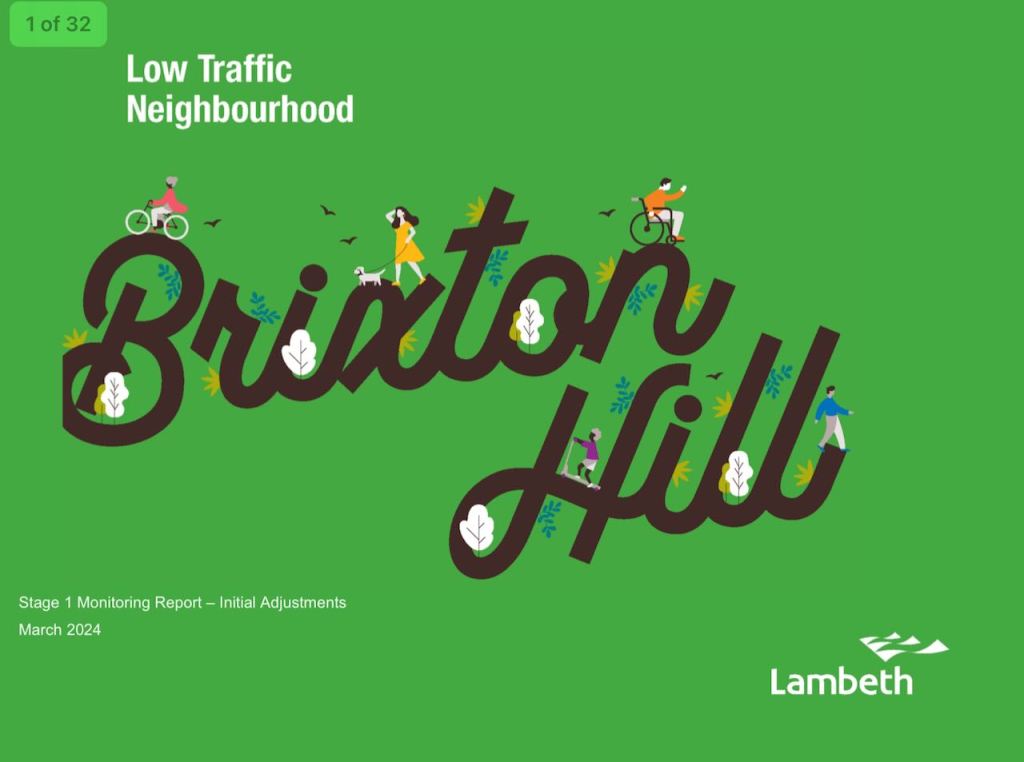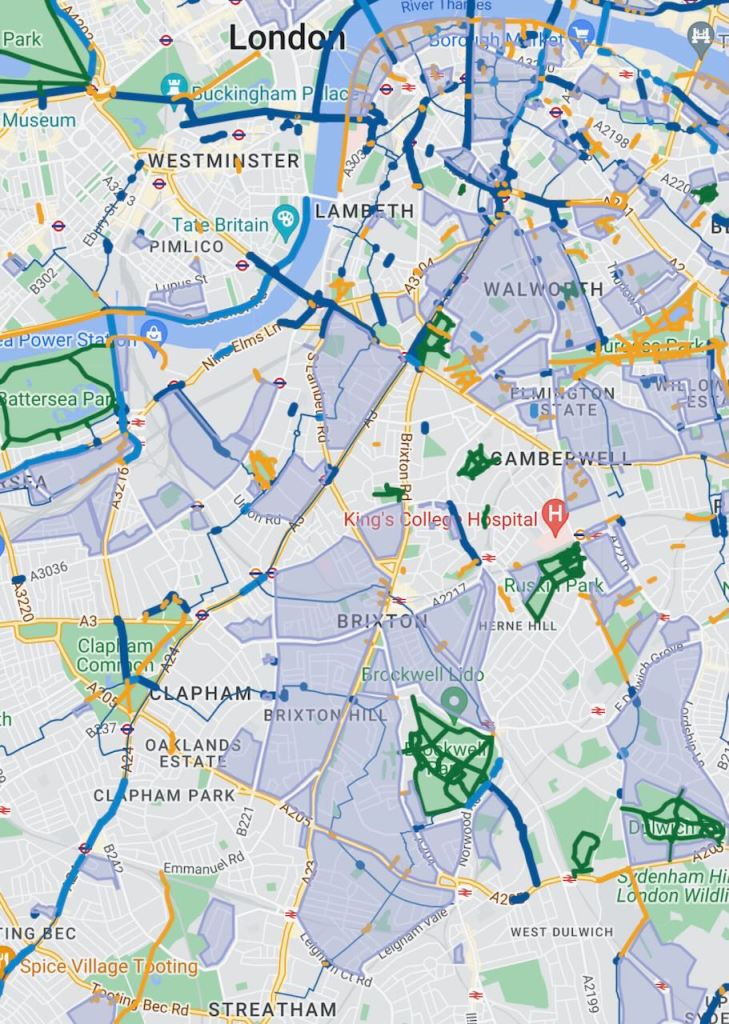
The first monitoring report for the Brixton Hill LTN has been published and it shows the scheme is successfully meeting its objectives. Overall, there is a 3.6% fall in motor traffic flows with, as you’d expect, large reductions within the LTN and only a 6% increase on boundary roads (immaterial in terms of the volume of traffic they carry).
Most significantly from our point of view, the scheme has very successfully reduced motor traffic below the ‘healthy route’ criteria on the key cycle links through the area. Lambeth council works to Dutch targets of below 2000 vehicles per day. However, a number of roads including Lambert, Strathleven and Morrish are narrow and largely one way with the ‘one way flow’ previously being above safe and comfortable limits.

While there remains a need for crossings on the boundary roads the routes through this LTN link up with Ferndale to the north, and Tulse Hill (and then Streatham Hill) to the east – there is now a large area around Brixton with comfortable backstreet cycling, and onward links on good cycle infrastructure to central London.

More information and a link to the full Brixton Hill LTN Stage 1 Monitoring Report is available here.
In other news, Lambeth have announced the next steps on the Ferndale LTN with some enhancements in response to feedback and initial plans for permanent filter designs.
The Streatham Wells LTN has been suspended while TfL construct a protected cycleway on a section of the A23 south of the South Circular. Lambeth have announced a number of improvements to be made to the area in the coming moths as well as plans for extended bus priority on the A23 prior to the LTN being reinstated. The Streatham Wells Stage 1 Monitoring Report shows there were a lot of positive impacts in the LTN so we look forward to seeing it return.
